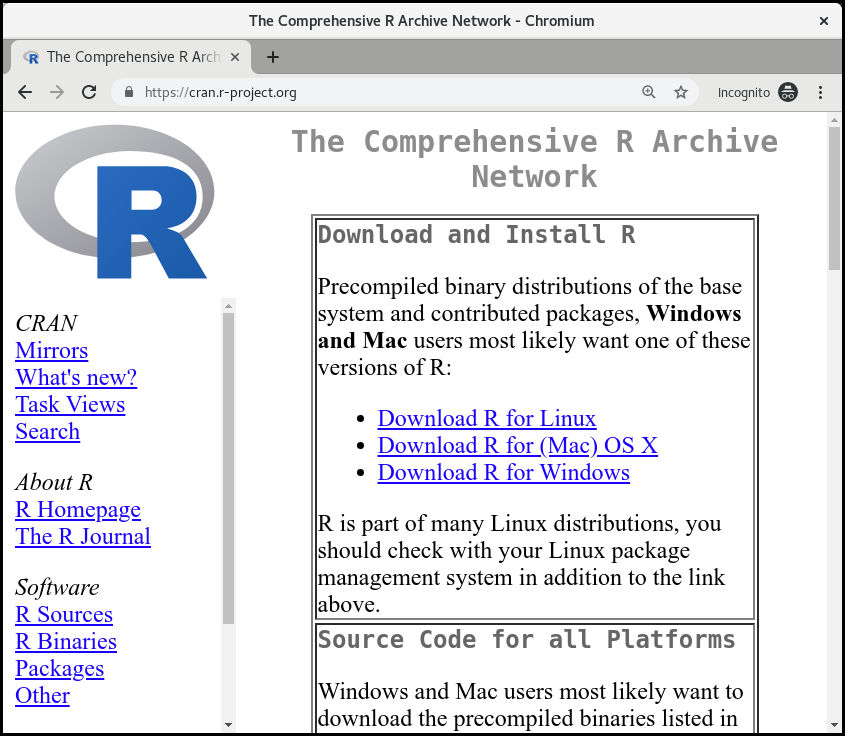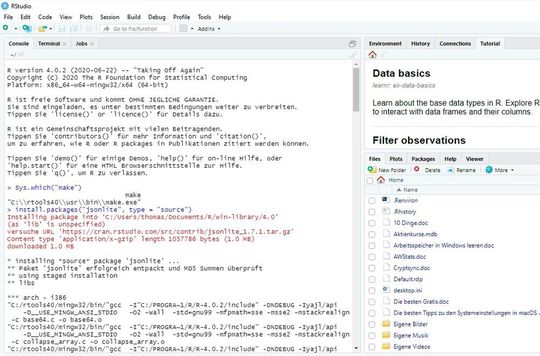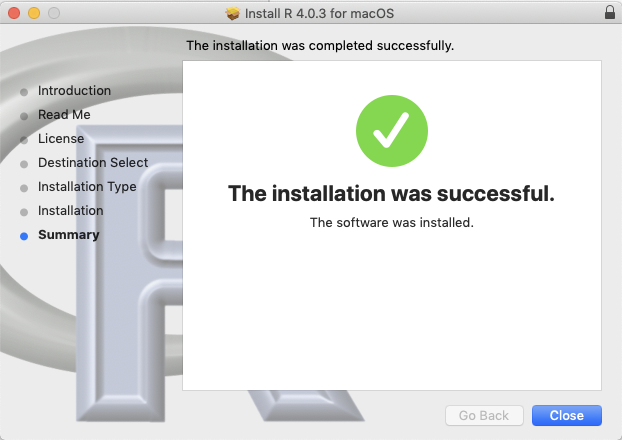
- #HOW TO INSTALL RTOOLS INTO R PDF#
- #HOW TO INSTALL RTOOLS INTO R ZIP FILE#
- #HOW TO INSTALL RTOOLS INTO R ARCHIVE#
If the package has any dependencies, the installer automatically downloads the dependencies and installs them. Run the R command install.packages and specify the package name. Run R or Rgui as administrator from this folder. lsf.str("package:ggplot2")Īnother option is to write: package_name:: and a list will show up in RStudio as a dropdown.For example the default path for a SQL Server default instance is:Ĭ:\Program Files\Microsoft SQL Server\MSSQL14.MSSQLSERVER\R_SERVICES\bin\圆4\ You can also use the lsf.str or ls commands to list all the functions inside an attached (loaded) package. Recall you can access this documentation in HTML format with the help function.
#HOW TO INSTALL RTOOLS INTO R PDF#
If the package is on CRAN, you will find documentation in PDF format of all functions inside a page like. Once installed, you can get a list of all the functions in the package.

Note you can also install packages from CRAN (even older versions) this way.

In case you have the zip hosted in some URL you can use the function from the installr package.
#HOW TO INSTALL RTOOLS INTO R ARCHIVE#
Go to Tools → Install Packages and in the Install from option choose Package Archive File (.zip. Install.packages("package_file_name.extension", You can also set your working environment first with the setwd function to the folder where you have downloaded the package file and then install the package specifying the name of the zip or tar.gz file. install.packages("file_path\\package_file_name.extension", Note that the file path musn’t contain spaces.
#HOW TO INSTALL RTOOLS INTO R ZIP FILE#
In order to install the package from a local zip file you just need to call the install.packages function with arguments repos = NULL and type = "source". You may have downloaded a package in zip or tar.gz format. libPaths() function.libPaths() # Returns the installation path of the libraries In addition, you can find out where the packages are going to be installed calling the.

You will also find useful examples to understand how the package works. Once loaded, you can use ? or the help function with the package name or the name of any function to see the documentation. For that purpose, you can load it with the library function, specifying the package name with or without quotation marks. install.packages("calendR")Īfter installation, you need to load the package if you want to access its functions. As an example, we are going to install the calendR package, that allows creating monthly and yearly calendars, but you can install the package you prefer. Once you decided what package to install, just call the install.packages function with the name of the package inside the parenthesis with quotation marks. There are all type of packages, from graphics packages as the well-known ggplot2 to very specific topics like the DTDA.cif package, that implements estimators for cumulative incidences of competing risks under double-truncation. Most of them have been developed by Data Scientists, Statisticians, Professors and researchers. The Comprehensive R Archive Network ( CRAN) is the official R packages repository, with thousands of free R packages available.



 0 kommentar(er)
0 kommentar(er)
